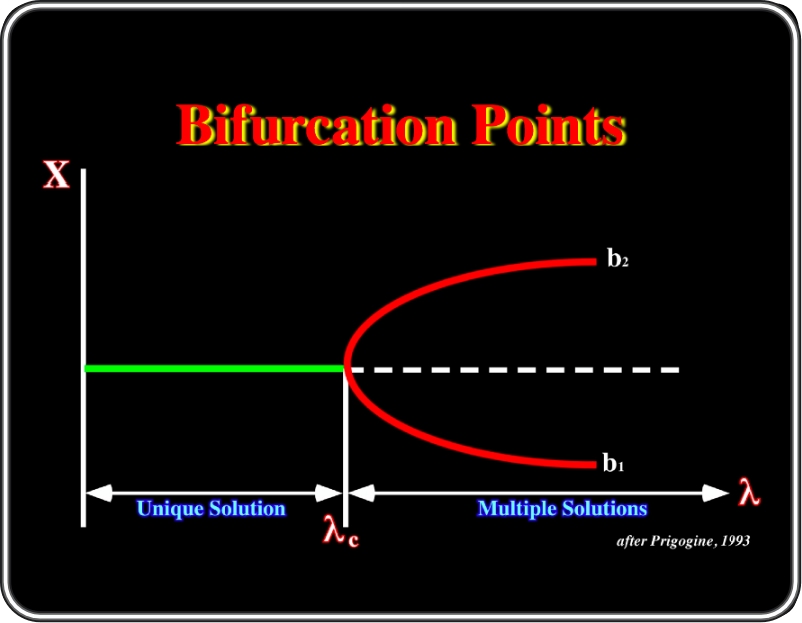

Natural evolution is a succession of stages described by determinist laws and stages described by probabilistic laws.

Concentration X is a function of the parameter ∂, which measures the distance from equilibrium. At the bifurcation point, the thermodynamic branch becomes unstable, and two new solutions b1 and b2 emerge. Beyond the bifurcation point, a set of new phenomena arise. Prigogine named these spatio-temporal organizations: Dissipative Structures. Irreversible processes describe fundamental features of Nature leading to non-equilibrium dissipative structures. For unstable systems we have to formulate the laws of dynamics at the statistical level. In such a formulation, the basic objects of physics are no longer trajectories or wave functions. They are probabilities. (Prigogine, 1993).
Nature is not linear.
Problems need multi-solutions.
Reject any single solution.
Favor multi-solutions.
Maths does not solve all problems.
Trial and errors often gives better results.
Finally, do not hide errors but try to not repeat them.
to continue press
next
Send E-mail to carloscramez@gmail.com or to carlos.cramez@bluewin.ch with questions or comments about this conference.
Copyright © 2006 CCramez
Last modification:
August, 2014